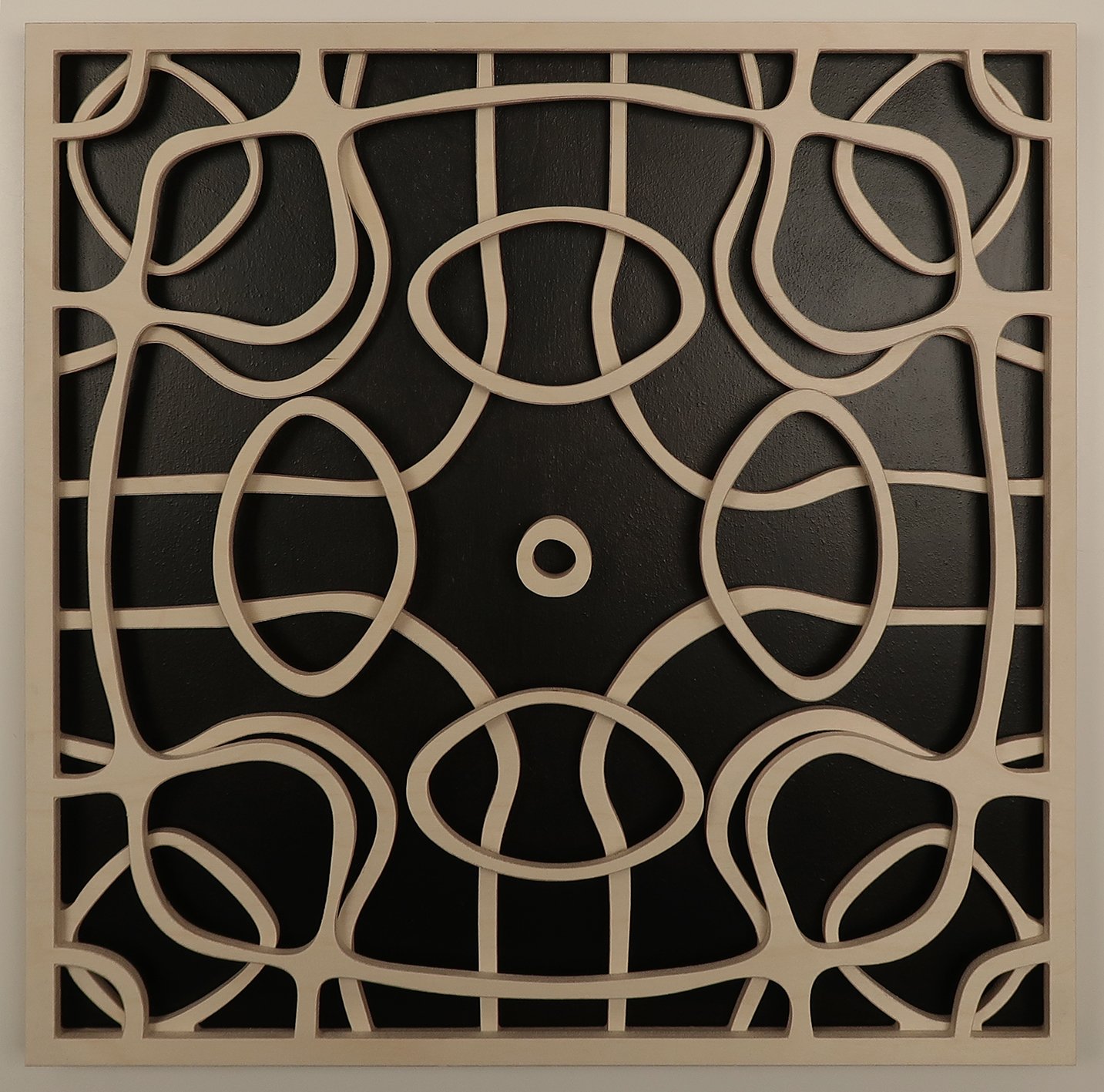Ingunn Bakke
Sound figures
9 November - 17 December 2023
The patterns in Ingunn Bakke’s reliefs result from experiments such as those conducted by the physicist Ernst F.F. Chladni, considered by many to be the founder of modern experimental acoustics. The research underlying the exhibition entails running a violin bow along the edge of a glass plate dusted with fine grains of sand. The bow’s vibrations cause the sand to form geometrical patterns. The experiments show that the plate does not bend in a uniform manner. This is because the grains of sand are repelled from areas where the vibration is strong and instead gather and come to rest along specific lines. Higher frequencies result in more complex patterns.
“Sound figures I” presents eight stages in a series of forms. The reliefs have titles based on the hertz frequency at the time when the given pattern took shape. These images can be recognised as a visual language also found in other processes in nature, and they are basic phenomena which I find fascinating, says Bakke.
Harmonic figures are used in the design of stringed instruments such as violins. Tones inherent to an instrument are dependent on the specific curvature of the top and back plates. Irregularities in the plates are revealed by means of errors in the harmonic figures. The works in the exhibition are made from machine-milled birch veneer and are partly painted by hand.
Ingunn Bakke (b. 1966 in Høyanger) lives and works in Oslo. She has previously exhibited at Sogn og Fjordane Art Museum, Galleri Soft in Oslo, AX Gallery in Berlin, Norway’s national annual ‘Autumn Exhibition’ and the annual exhibition ‘Craft’, which is organised by the Norwegian Association for Arts and Crafts. Bakke’s works have been purchased by several institutions, some of which are the National Museum in Oslo, KODE in Bergen and Sogn og Fjordane Art Museum. Her works of public art can be found at the hospital Sødersjukhuset in Stockholm and at assisted-living complexes in Trøgstad and Lillehammer.

